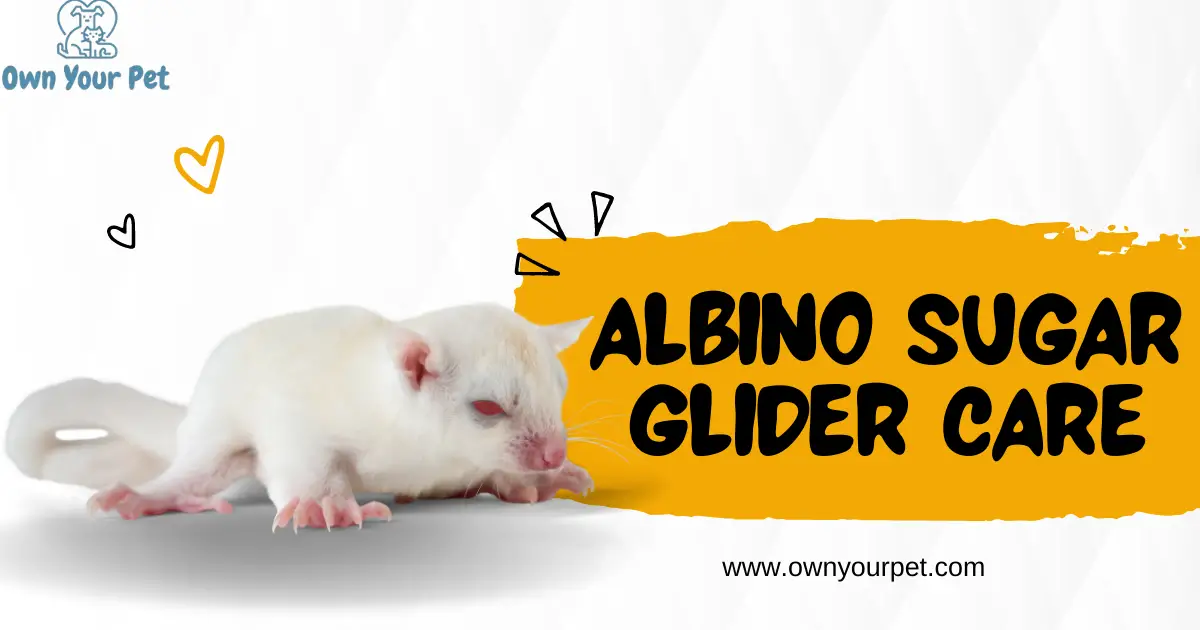Discover the world of Albino Sugar Glider care with our essential tips for a healthy pet. From creating a suitable habitat to providing a balanced diet, we’ll guide you through the unique needs of these adorable creatures. Learn how to ensure their well-being and create a loving environment that fosters their natural behaviors.
Albino Sugar Glider Care: Essential Tips for a Healthy Pet
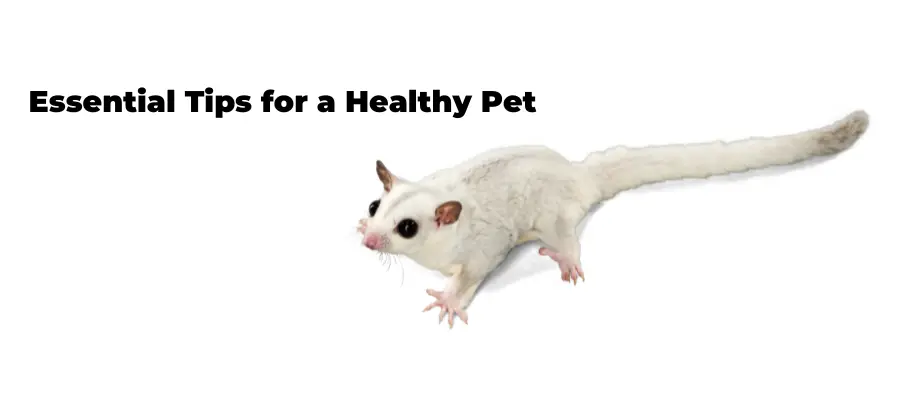
Discover the unique world of Albino Sugar Gliders and learn how to care for these enchanting creatures. Albino sugar gliders are incredibly unique and captivating pets, boasting a distinct appearance that sets them apart from their more common counterparts.
These rare marsupials, native to Australia, New Guinea, and Indonesia, have become popular exotic pets around the world. Their sociable nature and remarkable ability to glide through the air make them fascinating companions. But what exactly makes an albino sugar glider so special, and what should potential owners know about taking care of one?
While standard sugar gliders are known for their soft, grey fur and black markings, albino sugar gliders lack pigmentation, resulting in white fur and striking red eyes. This rare genetic trait not only gives them a visually stunning appearance but also is responsible for their significantly higher price tag, with some albino gliders costing as much as $5,000.
However, these small, nocturnal creatures have more to offer than just their looks; they are intelligent, social animals that can form strong bonds with their caretakers when given proper attention and care.
Before considering adopting an albino sugar glider, it’s essential to understand their unique needs and the commitment required to ensure their health and happiness. Potential owners of Albino Sugar Gliders should be ready to invest time and effort in maintaining a suitable environment and providing a balanced diet.
It’s essential to learn about the fascinating quirks of these extraordinary pets to ensure their well-being. Discover the rewarding journey of caring for these unique creatures and create a loving home they can thrive in.
Albino Sugar Glider Overview
Albino sugar gliders are a unique and rare variation of the sugar glider species. These small marsupials are known for their all-white coat and red or pink eyes. Hailing from Australia, Indonesia, and Papua New Guinea, sugar gliders are social creatures that thrive in groups called colonies.
In terms of appearance, albino sugar gliders are distinctly different from their standard gray or leucistic counterparts. They lack any pigmentation, resulting in their characteristic white fur and strikingly red or pink eyes.
Unlike leucistic sugar gliders, which have an all-white coat and black eyes, albinos are true to their name with their completely colorless appearance.
The rarity of these marsupials makes them quite expensive, with heterozygous albino sugar gliders being considered the rarest. If an albino sugar glider has pink eyes, the price lowers to around $3000. The pink eyes are due to a diluted gene, which is a more common trait.
As social animals, sugar gliders require companionship, interaction, and a comfortable habitat to thrive truly. Albino sugar gliders are no exception to this rule, making them an ideal pet for those with the time and dedication to invest in their care.
In conclusion, albino sugar gliders are fascinating, unique, and visually captivating marsupials that require a committed owner to provide a proper environment and social interaction. Their rarity and eye-catching appearance make them a prized pet among sugar glider enthusiasts.
Watch this cute creature flying:
Habitat and Distribution
These unique creatures inhabit various types of forests, including coastal forests of southeastern Queensland and tropical savanna climates in the north eastern region of Queensland.
Sugar gliders have an impressive ability to glide up to 165 feet in a single trip, making them well-adapted to their tree-dwelling lifestyle. Their large flaps of skin between their legs enable them to glide between trees in search of food and shelter.
The Sugar Glider, scientifically known as Petaurus breviceps, was last evaluated for The IUCN Red List of Threatened Species in 2016. The assessment concluded that the Sugar Glider is currently categorized as “Least Concern,” meaning it is not considered to be at significant risk of extinction.
Despite this classification, sugar gliders still face threats to their habitat in the form of wildfires and human activities such as deforestation and urbanization.
Sugar gliders are found in a range of forests, such as:
- Eucalyptus forests
- Acacia forests
- Melaleuca forests
Their diet consists of a variety of foods, including tree sap, nectar, pollen, fruits, insects, and small vertebrates. Albino sugar gliders have the same distribution and habitat preferences as normal sugar gliders, but their unique coloration makes them stand out from their blue-grey relatives.
Biology and Behavior
Albino sugar gliders are members of the marsupial family, which are fascinating little nocturnal creatures known for their unique mode of transportation – gliding. They have a squirrel-like body, with soft fur and a long prehensile tail that assists them in navigating through trees.
Their gliding membrane, called a “patagium,” stretches from their front legs to their back legs, allowing them to glide distances of up to 150 feet.
They establish strong bonds with their colony members, and maintaining such social connections contributes to their well-being. Within a colony, there are typically one or two dominant male sugar gliders who play a significant role in maintaining group harmony.
Males have scent glands on their foreheads, chest, and throat, which they use to mark their territory and communicate with one another.
The temperament of albino sugar gliders is generally friendly and curious. However, when they feel threatened or stressed, they may exhibit behaviors such as hissing or biting. Consistent and gentle handling from a young age can help make sugar gliders more comfortable around humans, especially with familiar people.
In the wild, albino sugar gliders share some unique characteristics with other animals due to convergent evolution.
For instance, flying squirrels are also nocturnal, arboreal mammals with a similar gliding membrane, despite flying squirrels being rodents and sugar gliders being marsupials. This remarkable similarity is a product of both species adapting to their environments in similar ways.
Sugar gliders are easily recognizable by their large, black eyes – which help them see in low light conditions – and the distinctive dark rings, which resemble eyeliner, around their eyes.
Lastly, these animals also exhibit a fascinating behavior known as torpor, which is a temporary hibernation-like state in response to cold temperatures or food scarcity. This fascinating adaption allows sugar gliders to conserve energy, ensuring their survival in the wild during challenging times.
Overall, the biology and behavior of albino sugar gliders make them unique and captivating animals, both in the wild and as pets. Their social nature, gliding abilities, and remarkable adaptability make them truly fascinating creatures to observe and study.
Diet and Nutrition
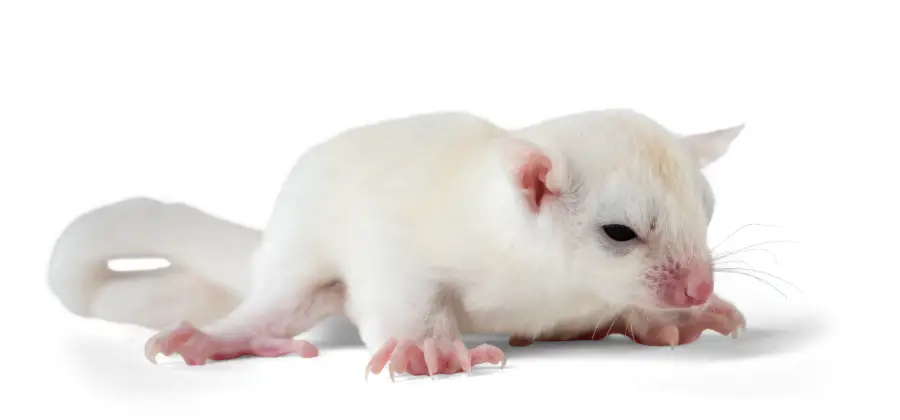
Albino sugar gliders, like all sugar gliders, have specific dietary needs to ensure they remain healthy and thrive in captivity. These adorable marsupials are omnivorous, which means they consume a variety of both plant and animal-based foods.
In the wild, a sugar glider’s diet consists of roughly 75% gums, saps, and nectars taken from different kinds of plants and trees. The other 25% of their diet would be what we call “live” food, such as insects, baby birds, bird eggs, and more.
In captivity, providing a balanced diet is essential for their well-being and overall health. Here’s a breakdown of the various foods your albino sugar glider would require:
- Gums, saps, and nectars: They love sweet liquids like sugar and honey, which provide them with essential nutrients. You can find commercial sugar glider-specific nectar supplements to replicate this portion of their natural diet.
- Insects: As part of their protein intake, albino sugar gliders enjoy a variety of insects like mealworms, crickets, and small cockroaches. Make sure to gut-load or dust these insects with calcium powder to ensure proper calcium intake.
- Fruits and Vegetables: Fresh fruits and vegetables make up a crucial part of their diet. Offer them 2-3 teaspoons of chopped fruit like apples, oranges, pineapple, mango, and papayas, as well as leafy greens and other veggies like cucumber, carrot, peas, and corn. Feeding fruits high in Vitamin C is especially important for albino sugar gliders as they are more prone to infections and need a stronger immune system.
Remember to monitor the amount of food you provide to your albino sugar glider, as they need to consume about 15-20% of their body weight daily. Overfeeding can lead to obesity and health issues, while underfeeding can cause malnutrition.
Alongside their diet, provide a clean, shallow dish of fresh water for them to drink. It’s crucial to maintain proper hydration levels to help them digest their food and stay healthy.
One key aspect in albino sugar glider nutrition is maintaining a proper calcium-to-phosphorus ratio. Aim for a 2:1 ratio in their diet to prevent ailments like metabolic bone disease, which is prevalent among sugar gliders fed an improper diet. Consulting a veterinarian experienced with sugar gliders can help ensure your albino sugar glider’s nutritional needs are met.
Caring for an Albino Sugar Glider
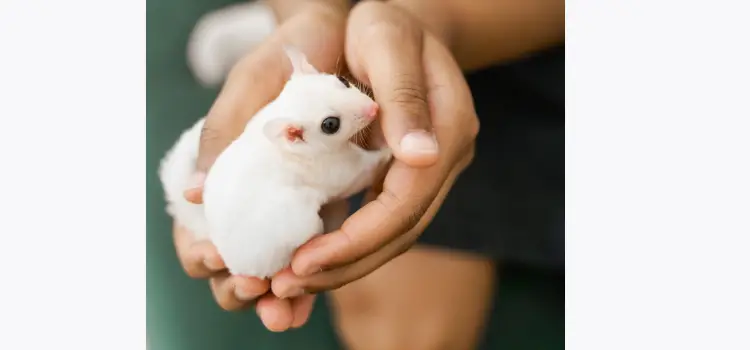
Albino sugar gliders are unique pets that require special care and attention. Like other sugar gliders, they have specific needs that must be met in order for them to thrive.
Housing and Enclosure
A suitable cage is crucial for your albino sugar glider’s health and well-being. The enclosure should be constructed of PVC-coated wire and have mesh openings no larger than ½-1 inch to prevent them from escaping or getting injured. Ideally, the cage should be at least 24x24x36 inches to provide enough space for them to move and exercise.
Inside the cage, you’ll want to include:
- Branches or rope for climbing
- Nesting pouches or boxes for sleeping
- A variety of toys and enrichment items
Don’t forget to keep the cage clean and sanitized to promote good health for your sugar glider.
Socialization and Interaction
Sugar gliders, including albinos, are social creatures that thrive on interaction with both their own kind and their human caretakers. In captivity, it’s best to have at least two sugar gliders to keep them company as they travel and explore their environment.
To socialize your albino sugar glider:
- Start handling them at a young age
- Be consistent and patient during interactions
- Allow them to become comfortable with your presence gradually
Keep in mind that while sugar gliders are exotic pets, they can be tamed and socialized with proper care and attention. Spend time interacting with your albino sugar glider daily to build trust and strengthen your bond.
Overall, caring for an albino sugar glider involves providing a secure and engaging living environment, as well as regular interaction and socialization. By following these guidelines, you’ll help ensure your unique pet stays healthy and happy in your care.
Breeding and Genetics

Albino sugar gliders are quite rare and valuable due to their unique appearance – being all white with red eyes. This is a result of the lack of melanin pigmentation in their eyes, skin, and hair, which is a genetic inheritance of recessive alleles.
When it comes to breeding albino sugar gliders, it is vital to keep genetics in mind to avoid potential health issues. The albino gene is recessive, requiring a copy from each parent to produce offspring with this coloration. It is not recommended to breed albino to albino; instead, an appropriate breeding pair would be albino to het (heterozygous) or het to het.
Recessive Genes and Breeding Success
- Adult sugar gliders can start breeding at around 8-12 months of age.
- Recessive genes, such as the albino gene, require both parents to pass on a copy for the trait to present in offspring.
- It is essential to maintain genetic diversity to prevent health problems associated with inbreeding.
Understanding the gestation period of sugar gliders is important for successful breeding. Female sugar gliders have a gestation period of approximately 16 days, and once the joey is born, it will remain in the mother’s pouch for 60-70 days before emerging. Keep in mind the importance of monitoring the health of both the parents and joeys during this process.
In conclusion, when breeding albino sugar gliders, it is essential to understand the role of recessive genes and genetic diversity to prevent health concerns related to inbreeding. By following recommended breeding practices, you can maintain a healthy population of these rare and fascinating creatures.
Finding and Buying an Albino Sugar Glider
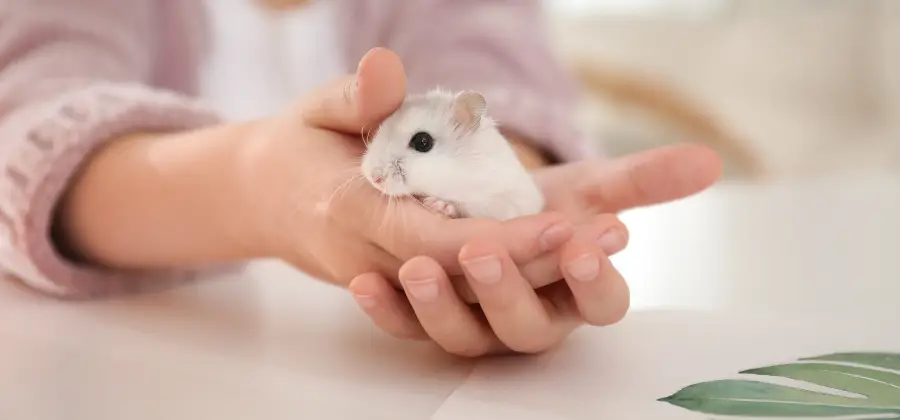
If you’re looking for a unique pet, an albino sugar glider may be a perfect choice. These rare creatures have white fur and red eyes due to a lack of pigmentation.
To find an albino sugar glider, it’s best to start by searching for a reputable breeder or pet store. Websites like GliderPets and Dragonstone Ranch are good resources for finding sugar gliders that may be available for adoption. Be prepared for a possible waiting period, as these unique pets are not always readily available.
Before making a reservation or placing a deposit, it’s essential to do your research. Speak to veterinarians and experienced sugar glider owners to gain a better understanding of what to expect when caring for an albino sugar glider.
There are a variety of diets that sugar gliders can thrive on, such as BML (Bourbon’s Modified Leadbeater’s) and CLC (Critter Love Complete) diets. Make sure you’re prepared to provide the proper care and nutrition for your new pet.
When you’ve found a breeder or pet store with albino sugar gliders available, remember the following:
- Be prepared to pay a higher price than for a standard sugar glider.
- Confirm the glider’s health with the breeder or store.
- Make a reservation or place a deposit to secure your albino sugar glider.
- Locate a veterinarian experienced in treating sugar gliders for regular check-ups and care.
With patience and thorough research, you’ll be on your way to welcoming a unique and fascinating pet into your home.
Conclusion
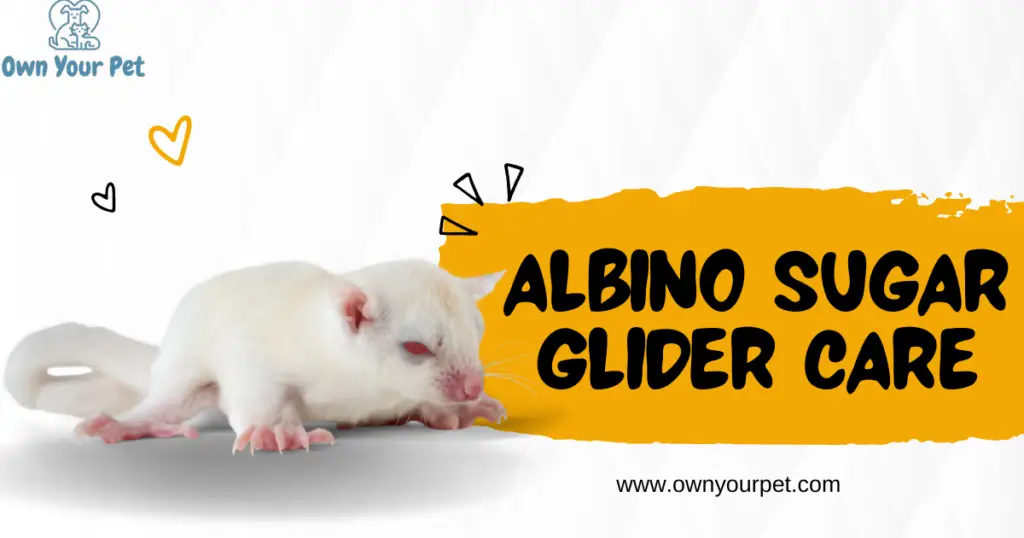
In conclusion, proper Sugar Glider care is crucial for ensuring the health and well-being of these charming and exotic pets. Owning and caring for Pet Sugar Gliders requires specialized attention and knowledge.
Baby Sugar Gliders, in particular, require extra care and a nurturing environment to thrive. Providing a suitable Sugar Glider Habitat with a Sugar Glider Cage that includes essential elements like a Cloth Pouch, Food Bowls, and a Shallow Food Dish is essential.
Additionally, a balanced and specialized diet, including Leafy Foods and a calcium supplement, is crucial to prevent Metabolic Bone Disease and maintain a Healthy Sugar Glider. Bonding with your Sugar Glider and establishing a regular feeding schedule promotes a strong connection and reduces health issues.
Sweet Corn and Sweet Potatoes are part of a healthy Sugar Glider’s specialized diet. Exotic animals like Adult Sugar Gliders require a Natural Diet with a shallow food dish.
Remember, these Nocturnal Animals should be protected from loud noises and direct sunlight. It’s important to note that Albino Sugar Gliders, with their Garnet Eyes and distinct Gray Markings, require special attention and a quality diet.
Avoid feeding them Sweet Foods, Sugar Substitutes, and Baby Foods, as these can be harmful. Providing clean water in a Plastic Bowl and maintaining a clean environment using appropriate cleaning supplies ensures their well-being.
By following a Sugar Glider Care Sheet and seeking advice from experienced Sugar Glider Owners, you can provide the specialized care and attention your Albino Sugar Gliders need.
Remember, the joy of having these amazing creatures as pets comes with the responsibility of understanding their natural habitat and ensuring their happiness and health.
